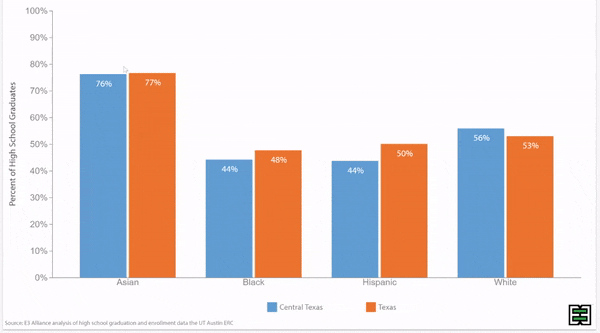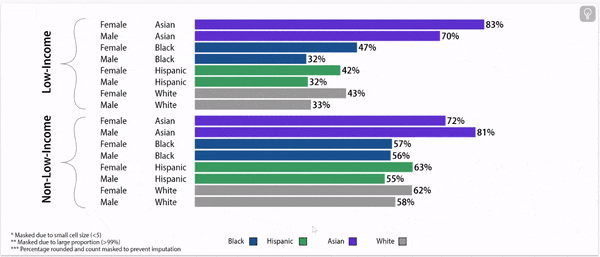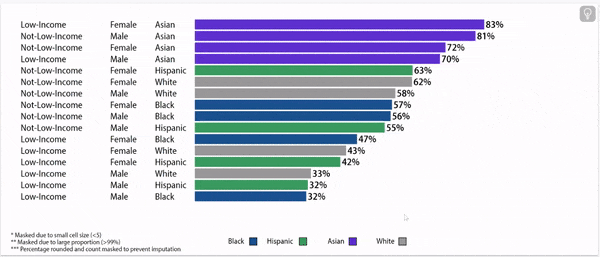Kindergarten Literacy Assessment
Systems that equip mastery of essential skills for early learners lays a solid foundation for children's academic and professional journey throughout elementary, middle, and high school. This benefits not only the students but also the broader community. Evidence-based initiatives such as full-day, low-ratio pre-kindergarten programs, high-quality child care, and home visiting programs play a critical role in preparing students.
About the Kindergarten Literacy Assessment
As part of early preparation, the kindergarten literacy assessment serves as a vital system-level tool to ensure that young children are ready to tackle the challenges of primary education, setting them on a path towards academic achievement and overall success.Jump to: Source and cohort information about this data.
2022-23
54%
41,625 / 76,481
Houston
Meets K-Readiness Standard on Literacy Assessment
2022-23
49%
161,798 / 330,527
Texas
Meets K-Readiness Standard on Literacy Assessment
Access and Supports for Pre-Kindergarten Attendance Boost Early Literacy Rates
Texas Education Systems Must do More to Prepare Students From Low-Income Households for Early Learning
Texas Education Systems Must do More to Support and Include Students who Have Been Traditionally Excluded From Formal Early Learning Opportunities
Digging Deeper: Students' Access to Early Learning Supports Differs Depending on Gender, Income, and Race
Meets K-Readiness Standard on Literacy Assessment, 2023
E3 Alliance historically used a well-established kindergarten readiness assessment to evaluate Central Texas’ ability to support early learning in multiple domains. During the 2020-2021 school year, the Texas Education Agency (TEA) limited the assessments that educators to using two literacy-focused assessments. While current assessments are less comprehensive and less sensitive to measuring educational inequities, early literacy results show consistent trends about systemic barriers to student success.
The state of Texas historically used several assessments designed to measure a child's skills and behaviors within the first few weeks of entering kindergarten. Currently, the Texas Kindergarten Entry Assessment (TX-KEA) from the Children’s Learning Institute (CLI) and Texas mCLASS (M-CLS) from DIBELS (another set of procedures and measures used for assessing literacy skills) are the only assessments accepted for official reporting purposes by TEA. Studying results from kindergarten literacy assessments provides a deeper understanding as to how to better serve students during their early years and build equitable education systems.
Outcomes that reference data from 2021, 2022, or 2023 do not include San Marcos CISD, due to a data discrepancy.




